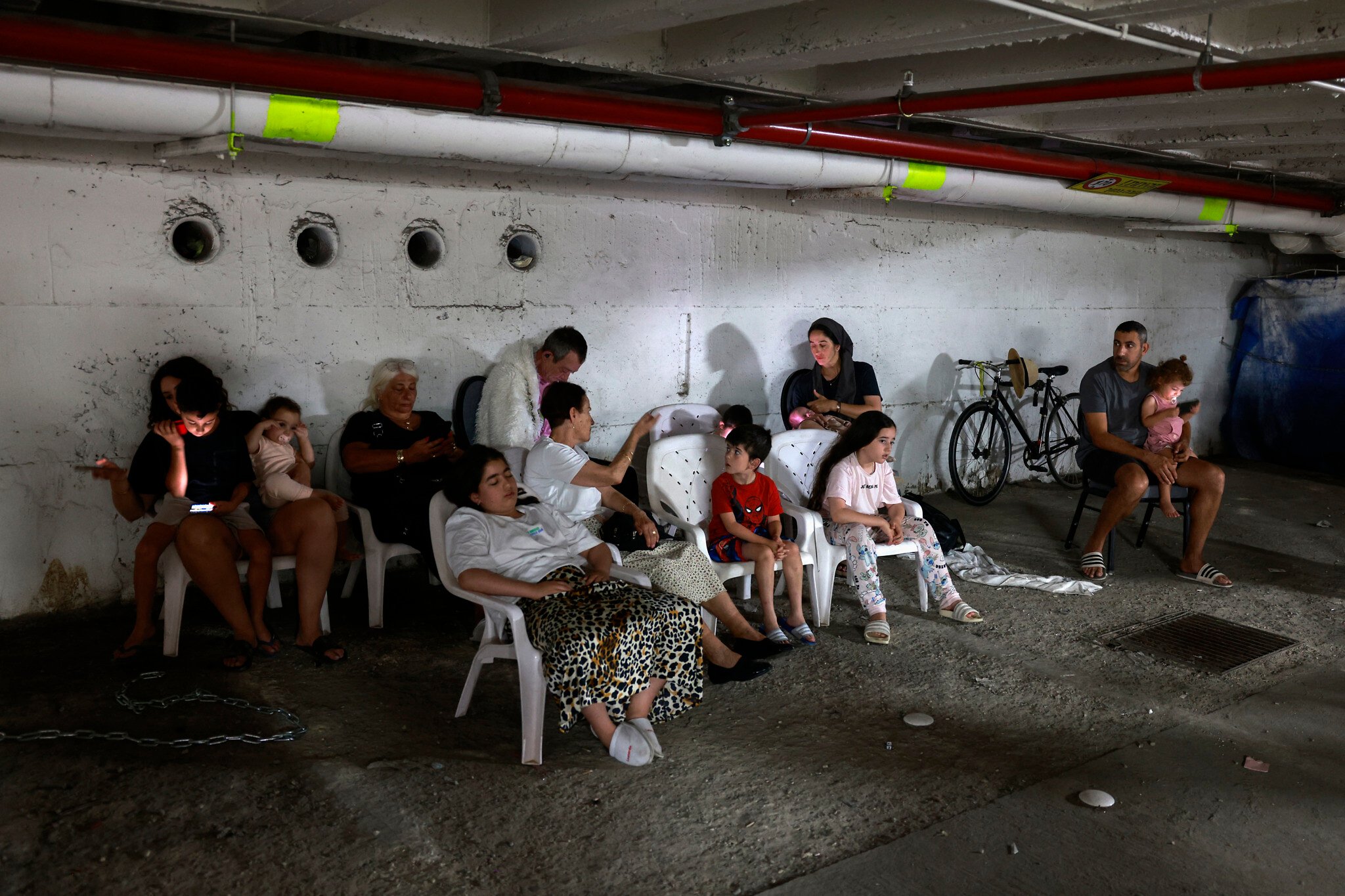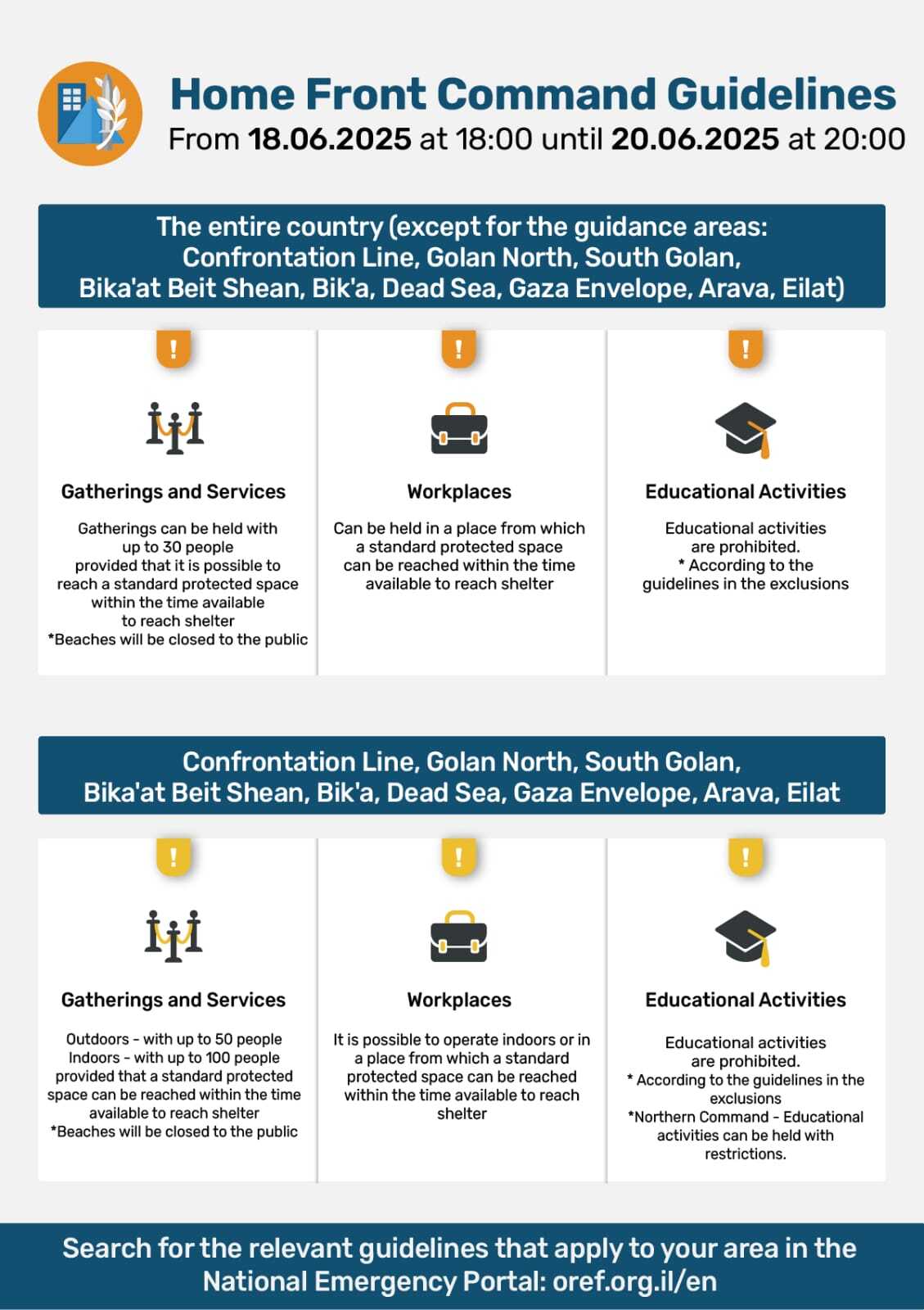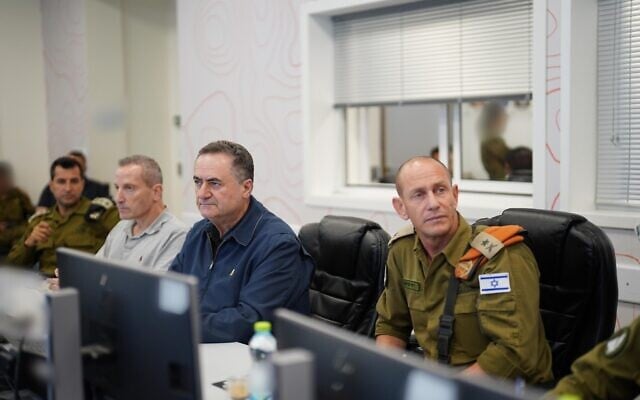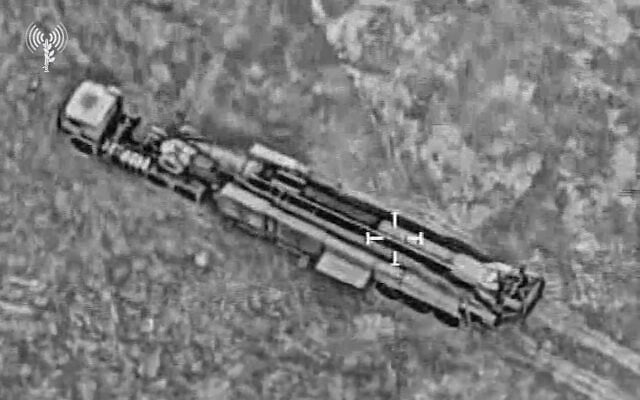



Six days into Israel’s military operation in Iran, the Israel Defense Forces’ Home Front Command said Wednesday it was easing some of the restrictions imposed on civilians at the outbreak of the conflict, allowing workplaces to resume activities and permitting small gatherings.
However, schools are to remain closed nationwide until further notice, which will likely prevent many parents of young children from returning to their jobs.
The changes come amid a downward trend in Iran’s ballistic missile attacks, with recent days seeing smaller salvos.
Defense Minister Israel Katz said he had approved the IDF’s recommendations to ease the civil defense policy, following an assessment with Home Front Command chief Maj. Gen. Rafi Milo and other officials.
“Alongside our intense fighting against Iran until the threats are removed, we will also reopen the economy, ease restrictions for the public, and return Israel to a path of productivity, activity, and security,” Katz said in remarks published by his office.
The changes take effect at 6 p.m. Wednesday and will remain in effect until Friday at 8 p.m., when the Home Front Command will conduct another assessment.
The scale of activity in most areas of the country will be adjusted from “strict defensive posture” to a “limited activity posture,” Home Front Command said. This means gatherings of up to 30 people are permitted, provided a shelter can be reached in time.
Along Israel’s borders — in northern frontier communities, the Golan Heights, Beit She’an Valley, Jordan Valley, Dead Sea, Arava, Eilat, and Gaza border communities — the scale will be adjusted from “strict defensive posture” to a more lax “partial activity posture.” This means gatherings in those areas are permitted for up to 50 people outdoors and 100 people indoors, provided a shelter can be reached in time.
Nationwide, workplaces will also be able to operate under the same conditions, but schools will remain closed for now.
Until now, all gatherings had been prohibited since Friday and workplaces — aside from those deemed essential — had been shuttered.
Katz said the decision to begin to reopen Israel’s economy “is a message of victory over the Iranian enemy.”
“They seek to harm us and shut us down, but we are not only striking back offensively and protecting the population, but also beginning a gradual reopening process,” he said.
Speaking at the assessment on Wednesday, Milo, the Home Front Command chief, said his forces were “deployed and prepared, together with emergency and rescue organizations, the police, the fire service, Magen David Adom, and local authorities, in order to provide a rapid response to any incident.”
He said easing the restrictions on the public was “very important.”
“It demonstrates resilience and the ability to return to activity. It relies heavily on the IDF, on offense and defense, but also on the behavior of the population,” Milo said.
“It’s very important to emphasize that this does not mean the war is over. Citizens must continue to follow Home Front Command instructions, and when they hear an alert, they must take action and seek shelter. This truly saves lives and enables us to continue striking and hitting Iran,” he added.
In the first days of the war Iran launched infrequent attacks of dozens of missiles — up to around 60 at a time. Over the past two days, it has been launching smaller but more frequent salvos, most of them consisting of fewer than 10 at a time. Some have had as few as two missiles.
The IDF believes Iran’s capabilities have been degraded by Israeli strikes on missiles and launchers. According to IDF assessments, the drop in missile numbers is the result not of Iran trying to conserve missiles for a long war but rather of its struggle to coordinate larger attacks.
The majority of Iran’s top military leadership has been eliminated in strikes, and some 40% of its ballistic missile launchers have been destroyed, according to the IDF.
The army has also said it has been “hunting down” missile launchers and thwarting some of the attacks, as it has aerial supremacy over western Iran to Tehran.
Israel says its sweeping strikes on Iran’s top military leaders, nuclear scientists, uranium enrichment sites, and ballistic missile program — which began early Friday — is necessary to prevent the Islamic Republic from obtaining a nuclear weapon and from realizing its avowed plan to destroy the Jewish state.
Iran has retaliated by launching over 400 missiles and hundreds of drones at Israel. So far, 24 people have been killed in Israel and more than 500 wounded.




